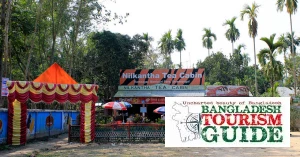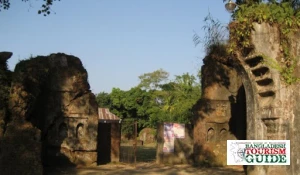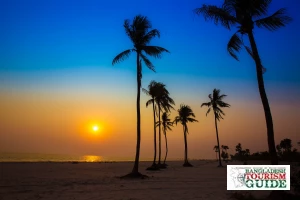Description:
In the tradition of Kamalganj upazila, Lawachhara National Park, where nature has distributed its beauty treasures. Various species of trees, wild animals like deer, monkeys, various species of cats, forests, cock tales, and mango tigers are found. Tropical evergreen and alluvial forest is 1250 hectares.
A scene from the film ‘Around the World in This Day’, which was based on the famous novel of Julberg, was shot in the forest. Just like the railway that has gone to the forest, there are scenes of some scenes in the film. There was a scene in the film – the train was running. Suddenly the driver noticed that the flock of elephants in front of the line was walking around. The train stops. Come down from the room, David Dawn, the hero, see what the matter is. In front of the village, Saitidah was at the time. Save the girl and run the hero. She is Charlie McLean. This section of the film was filmed in the railway area of Loyawachara.
Bio-diversity: There are 167 species of plants, including Segun, Chapalis, Agar, Blood, in the Laoyachra National Park, 04 types of amphibians, 06 species of reptiles, 246 species of birds and 20 species of mammals.
The only surviving African Tikawk tree in Bangladesh is in the National Park in Lauyachara. Extreme earrings are available in only four countries of the world and the number is seen in the largest number of laujachara national parks in Bangladesh. There are about 276 species of wild animals, including bannuri, oysters and various species of birds in the Laujacha National Park. Within this garden there are hundreds of traditional Khasiopunji, who hold their own culture and heritage.
There is one, one and a half and three-hour trail in the Lauyachra National Park, where tourists can enjoy the nature very closely. A 3-hour route in three routes, a 1 hour road and the other 30 minutes way. With the help of a trained guide, the forest can be made upright. These three ways, created without disturbing the nature, will be seen in different species of insects, plants, birds and orchids. Hanuman, the monkey and the puppy can also be seen if fate is good. Nature and tourism were visited by many tourists from country and abroad every day. In the forest, the tourists are surrounded by forests, but in the winter there is the highest number of people.
Half-hours trekking: The path starts from the left side of the railway track. At the beginning of this path, kulu monkeys can be seen in tall high trees, which can be found in the monkeys. Anyone walking through a variety of trees will be thrilled by the solitude of the jungle to walk on this path. Apart from this, the big orchid tree of this path can be found in the wild orchid. Although this time it is not time to flower at Orchid. The trail ends in the right direction at the starting point.
One-hour trekking: At the beginning of the one-hour trekking, you will see a huge gum tree. The name of this tree is Kosturi. The scent is made from the eagle. Apart from this, the trees will be seen as jhawa, jagdumur, mali bamboo, kathali champa, lehma etc. There are more than a hundred year old clusters and gamari trees. Apart from this, there are many wild animals in this forest, besides wild animals, monkeys, Hanuman, who come to eat fruits of various fig trees. If fortunately the fortune may be fall further. In addition to this, may be found in the Maya deer and the forest cock rooster.
Three hours of trekking: The three-hour walk is also very exciting. The Khasiyad was situated on the left side of Maghurrha Punji. The inhabitants of Punjis basically cultivate it. In the year 1950, the Punxis were created by forest department. The huge bamboo gun can be seen in this way. In this garden there are the Kulu monkeys and lazy monkeys of rare species. Shameless monkeys nocturnal animals. They spend asleep in the bamboo rush during the day. Apart from this, many birds of different species can be seen in the way, and meet at the end of the path, one of the attraction of forest is the wool family. They live in the tallest trees in the forest.
Tickets:
Lawachara National Park entry fee is 20 taka, students and minors 10 rupees, foreign citizens are five US dollars or equivalent money. Besides, parking of car, jeep and microbus can cost 25 taka Besides, if you want to guide, there are three categories guide from 200 to 600 taka. The use of picnic spot is 10 paisa per day. There is no arrangement for food inside or around, and it has to be done manually.












